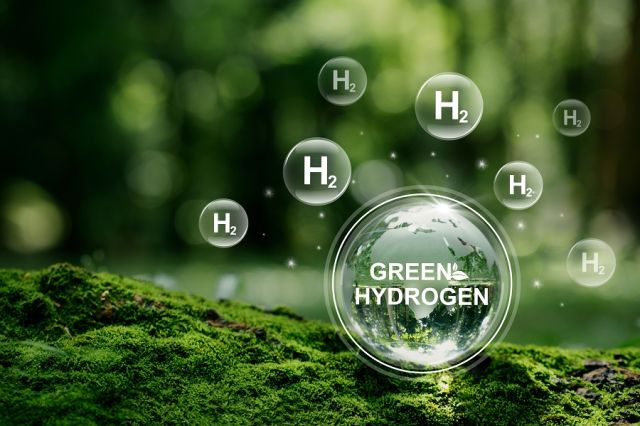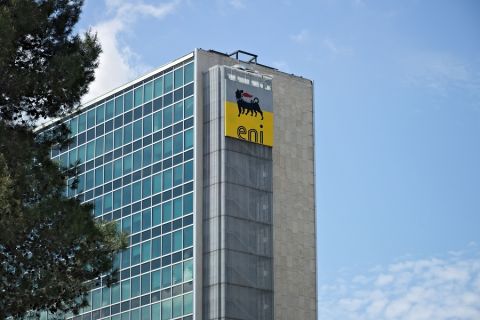
CNX says it ended coordination with the Adams Fork project, an anchor project for the Appalachian Regional Clean Hydrogen hub. (Source: Shutterstock.com)
Pennsylvania-based CNX Resources Corp. said Dec. 15 it is exiting the Adams Fork ammonia project and is evaluating alternative sites for clean hydrogen projects in West Virginia.
The decision was made after an inability to reach commercial terms with project developers amid delays and hydrogen production tax credit uncertainty.
The natural gas producer was the feedstock provider for Adams Fork, a proposed multibillion-dollar anchor project for the Appalachian Regional Clean Hydrogen (ARCH2) hub. The hub is one of seven selected by the U.S. Department of Energy in October to enter negotiations—currently underway—for a share of up to $7 billion to form regional hydrogen hubs to jumpstart the sector in the U.S.
Adams Fork plans to produce up to about 2.1 million tonnes per year of ammonia, equivalent to more than 300,000 metric tons of hydrogen annually, in its first train, according to the project’s website.
CNX said Dec. 15 it “remains committed” to supporting the hub with its feedstock, but its “final investment decision remains contingent upon tax credit guidance that unambiguously supports low carbon intensity feedstock projects that will facilitate development of the regional clean hydrogen hubs, including ARCH2.”
RELATED:
CNX Banking on Built-in Customer Base for Hydrogen [WATCH]
US Unveils Recipients of $7 Billion for Hydrogen Hubs
Biden Spotlights $7B for Hydrogen Hubs, But Hurdles Remain
Hydrogen players and watchers are eagerly awaiting guidance from the U.S. Treasury Department on what is known as 45V, the hydrogen production tax credit, unveiled as part of the Inflation Reduction Act. The 45V hydrogen production tax credit offers up to $3 per kg of hydrogen, depending on greenhouse-gas emissions intensity.
However, project developers and partners do not yet know what electricity power sources will qualify for the credit and other details on how the credit will be implemented. The verdict is also still out on whether the credit will include an additionality provision that favor hydrogen producers powering their facilities with new renewable electricity generation instead of existing sources.
Stricter rules could favor green hydrogen production, which utilizes renewables such as wind and solar, in an effort to lower emissions; while looser rules could allow the sector to scale more quickly with the use of natural gas combined with carbon capture.
The ability to claim the full credit could play a role in financing hydrogen projects in the U.S.
Leaked details of draft guidance from the Treasury Department were reported earlier this month by Politico and Bloomberg. Citing anonymous sources, media reports claimed the Treasury Department would issue draft tax credit guidance backed by climate advocates instead of fossil fuel producers. Electrolytic hydrogen, or green hydrogen, produces hydrogen with electricity made from renewable energy resources, while blue hydrogen utilizes natural gas as feedstock with carbon capture and storage.
The economic viability of some hydrogen projects hinges on the ability to claim the full credit.
“CNX calls on the federal government to heed the advice of elected officials, organized labor, and stakeholders across the country who have advocated for rules that would catalyze, not stifle, the burgeoning hydrogen economy,” CNX said in the release. The company later called the Appalachian region the “textbook location for a clean hydrogen hub due to its unique access to ample low-cost natural gas feedstock, end-user demand, workforce and technology capability, and carbon sequestration potential.”
ARCH2, with applied science and tech company Battelle as program manager, is in line to get up to $925 million in federal funds. Speaking during Hart Energy’s recent DUG East conference in Pittsburgh, CNX COO Navneet Behl said private investment required for the hub is about six times as much. The hub, he said, could bring more than $6 billion in investment to the region.
When the draft guidance is released by the Treasury Department it may still undergo revisions before being finalized. The Treasury Department has recently issued guidance on the sustainable aviation fuel credit and the 45X advanced manufacturing production credit.
Recommended Reading
Ithaca Deal ‘Ticks All the Boxes,’ Eni’s CFO Says
2024-04-26 - Eni’s deal to acquire Ithaca Energy marks a “strategic move to significantly strengthen its presence” on the U.K. Continental Shelf and “ticks all of the boxes” for the Italian energy company.
Apollo to Buy, Take Private U.S. Silica in $1.85B Deal
2024-04-26 - Apollo will purchase U.S. Silica Holdings at a time when service companies are responding to rampant E&P consolidation by conducting their own M&A.
Deep Well Services, CNX Launch JV AutoSep Technologies
2024-04-25 - AutoSep Technologies, a joint venture between Deep Well Services and CNX Resources, will provide automated conventional flowback operations to the oil and gas industry.
EQT Sees Clear Path to $5B in Potential Divestments
2024-04-24 - EQT Corp. executives said that an April deal with Equinor has been a catalyst for talks with potential buyers as the company looks to shed debt for its Equitrans Midstream acquisition.
Making Bank: Top 10 Oil and Gas Dealmakers in North America
2024-02-29 - MergerLinks ranks the key dealmakers behind the U.S. biggest M&A transactions of 2023.






